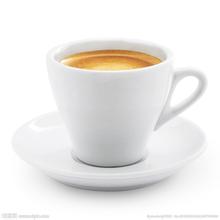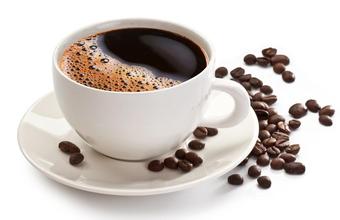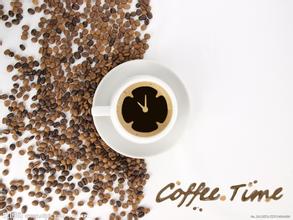Historical Origin of the Flavor of Jamaican Blue Mountain Coffee
Why Blue Mountain Coffee tastes pure "secret": their coffee trees all grow on rugged hillsides, picking process is very difficult, non-local skilled women simply can not be competent. It's important to pick coffee beans that are ripe, as immature or overripe can affect the quality of coffee. The beans are shelled the same day and allowed to ferment for 12-18 hours. Coffee beans are then washed and sifted. after
The process is drying, which must be carried out on a concrete floor or thick blanket until the humidity of the coffee beans drops to 12%-14%. Then they are stored in special silos. When needed, it is taken out and roasted, and then ground into powder. These procedures must be strictly controlled, otherwise, the quality of coffee will be affected.
Source editor
When you say Jamaica, your eyes light up because it produces the best Jamaica Blue Mountain coffee in the world. We absolutely believe that Jamaica Blue Mountain Coffee is the best coffee, it has a good balance of acid, sugar, alcohol and bitterness, it tastes fragrant and tastes very smooth; however, it is too expensive, and although it is worth trying, there is no need to be fascinated by it. Because other selected coffees also have their own characteristics, and taste delicious, the price is reasonable, this is the good coffee in our life.
The earliest "Jamaica Blue Mountain" refers to the coffee produced by "Wallenford Farm" and "Silver Hill Farm", with the former having the best quality; today's "Jamaica Blue Mountain" refers to coffee beans grown in the Blue Mountain area (more than 1000 meters high) east of Kingston, the capital of Jamaica. Now the largest estate in the country, M.B.C. F is printed on its barrels, and its products are often found in Taiwan. Jamaica Blue Mountain is a very strict quality control, by the government "Coffee Industry Council" certification work.
Coffee beans generally grown at low altitudes and other regions can only be called "Jamaica mountain beans" or "Jamaica washed beans." Compared with Jamaica Blue Mountain, the flavor is much different. However, these producing areas are twice the area of the real Blue Mountain region and account for 75% of the country's production. Therefore, when buying Jamaica coffee, don't think that you have bought Blue Mountain coffee.
Because Jamaica Blue Mountain is too famous, therefore, there will be counterfeit Blue Mountain coffee on the market, or simply called "Blue Mountain Coffee," basically this is the comprehensive product prepared by the store itself, which may not have a real Jamaica Blue Mountain bean.
history editing
In 1717 King Louis XV of France ordered coffee to be grown in Jamaica for twenty years.
Blue Mountain Coffee
Blue Mountain Coffee (6 photos)
In the mid-19th century, Sir Nicholas Lawes, Governor General of Jamaica, imported Arabica seeds from Martinique and began planting them in St. Andrew. To this day, St. Andrew's is one of the top three growing regions for Blue Mountain coffee in Jamaica, along with Portland and St. Thomas. Within eight years, Jamaica exported more than 375 tons of pure coffee. Coffee production peaked in 1932, harvesting more than 15000 tons of coffee.
The Jamaica Coffee Industry Board was established by the Government of Jamaica in 1950 to establish quality standards for Jamaica coffee and oversee the implementation of quality standards to ensure the quality of Jamaica coffee. The Commission awards a special official seal to Jamaica's exports of green and roasted coffee and is the world's highest national coffee authority. Those that can represent the origin of Blue Mountain Coffee include Mavis Bank Coffee Factory (M.B.C. F), Blue Mountain Coffee Cooperative Factory (M.H.C.C.T.), Portland Blue Mountain Coffee Cooperative Plant (P.X.X.S.H.), Coffee Industry Association (Wallenford), Coffee Industry Association (St. John's Peak) and Blue (J.A.S.) 6 kinds of logo.
By 1969, the situation had improved, as Japanese loans had improved the quality of production and thus secured the market. By now, the coffee has reached the point of being fanatically loved.
By 1981, about 1500 hectares of land in Jamaica had been cleared for coffee, followed by another 6000 hectares. In fact, today's Blue Mountain region is a small area of only 6000 hectares, and it is impossible that all the coffee labeled "Blue Mountain" is grown there. Another 12000 hectares are devoted to growing two other types of coffee: alpine premium coffee and Jamaica premium coffee

Important Notice :
前街咖啡 FrontStreet Coffee has moved to new addredd:
FrontStreet Coffee Address: 315,Donghua East Road,GuangZhou
Tel:020 38364473
- Prev

Guatemala Coffee Flavor Taste Taste
Guatemala coffee taste: bitter and fragrant, taste good. High-quality coffee is mellow and has a good quality sour, quite well received, is the best material for mixed coffee. Guatemala's extremely hard beans are elegant, lively, sour, clean and odorless, layered, and green apple sour, berry fruit, jasmine flower, orange peel, green pepper, fruit sour, chocolate sweet, etc.
- Next

Panamanian coffee growing environment
Growing environment Panama is a small country located in the center of the American continent. The waters of the Atlantic and Pacific oceans flood its beaches. Panama is located at 9 degrees north latitude, the meeting point of the Central Mountains, where Mount Baru, one of the highest volcanoes in Central America, is located. The Baru volcano has an altitude of more than 11400 feet, and the land around it is rich in nutritious and fertile soil.
Related
- Does Rose Summer choose Blue, Green or Red? Detailed explanation of Rose Summer Coffee plots and Classification in Panamanian Jade Manor
- What is the difference between the origin, producing area, processing plant, cooperative and manor of coffee beans?
- How fine does the espresso powder fit? how to grind the espresso?
- Sca coffee roasting degree color card coffee roasting degree 8 roasting color values what do you mean?
- The practice of lattes: how to make lattes at home
- Introduction to Indonesian Fine Coffee beans-- Java Coffee producing area of Indonesian Arabica Coffee
- How much will the flavor of light and medium roasted rose summer be expressed? What baking level is rose summer suitable for?
- Introduction to the characteristics of washing, sun-drying or wet-planing coffee commonly used in Mantenin, Indonesia
- Price characteristics of Arabica Coffee Bean Starbucks introduction to Manning Coffee Bean Taste producing area Variety Manor
- What is the authentic Yega flavor? What are the flavor characteristics of the really excellent Yejasuffi coffee beans?

